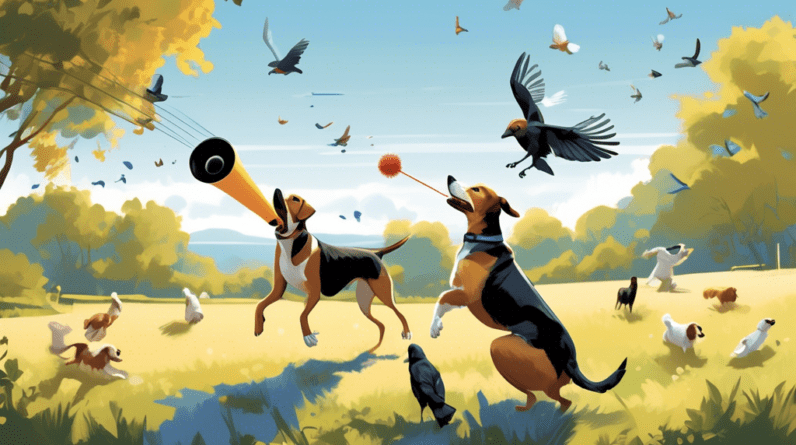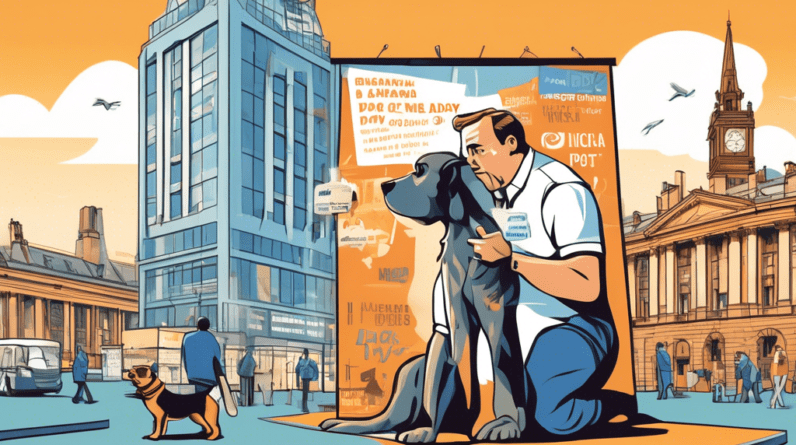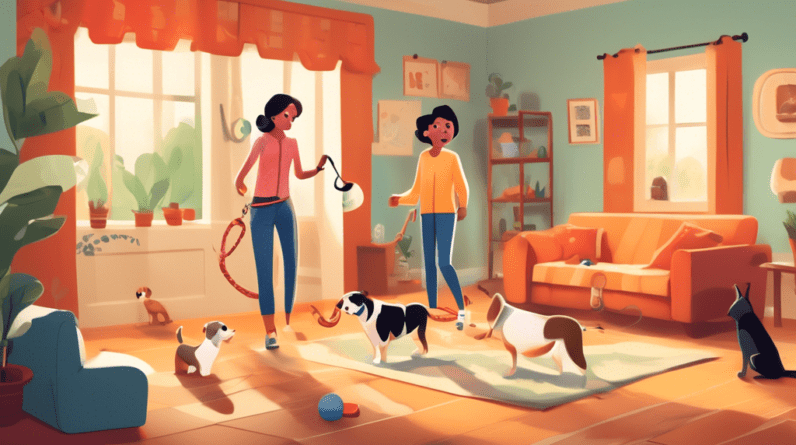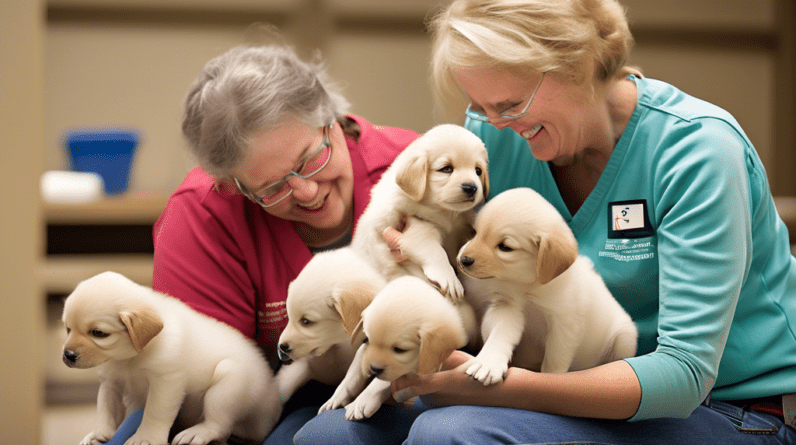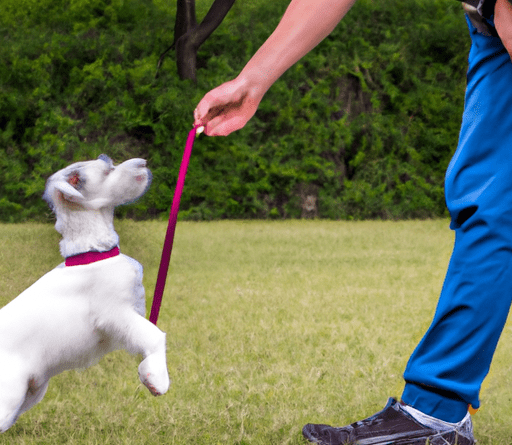
Dog training at home can be a great way to bond with your pet and teach them new skills. With the right knowledge and training tools, you can provide your pup with an enriching environment to learn and grow. From basic commands like sit or stay to more complex activities such as agility and nose work, training your dog at home can help them become a well-mannered, obedient, and happy pup!
I. Introduction
I. Introduction to Dog Training at Home: Dog training at home can be a great way to bond with your pet, teach them important skills, and keep them healthy and happy. Training your dog at home can be a rewarding experience for both you and your pup, as it involves positive reinforcement and patience. It’s important to create a safe and comfortable learning environment for your pup, and to use positive reinforcement to encourage desired behaviors. Training your dog at home can be an inexpensive and effective way to teach them the basics of obedience, manners, and tricks. With patience, consistency and positive reinforcement, your pup can learn quickly and efficiently.
A. Definition of Dog Training
Dog training is the act of teaching a dog specific behaviors. This can be done in a variety of ways including physical and verbal cues, positive reinforcement, clicker training, and more. Dog training is an important part of owning a pet, as it establishes a bond between the pet and the owner. Training a dog helps to provide structure, which is especially important for younger pets. It also helps to keep pets safe and well behaved. Dog training at home is a great way to bond with your pet, and can be done as part of an overall training plan. Home training can be done in many different ways and can often be tailored to the individual needs of the pet. It is important to work with an experienced trainer, as they can provide advice and support that can help to ensure that the training is successful.
B. Benefits of Dog Training
Dog training at home has many benefits. It can help your dog to become more obedient and responsive to commands, which can help to keep them safe and out of trouble. Training can also help to strengthen the bond between you and your dog, as it encourages you to spend quality time together. Dog training can help to curb unwanted behaviors such as barking, jumping, and chewing, which can make your home a much more peaceful and pleasant place to be. Training can also help to improve your dog’s socialization skills, so they can interact better with other dogs and people. Finally, training is great for mental stimulation and can help to provide your dog with an outlet for their energy and boredom.
II. Preparing to Train Your Dog at Home
Preparing to train your dog at home is an important step in ensuring a successful training experience. Before starting any training, it is important to make sure that your dog is in a safe, comfortable environment, and that you are working with a well-socialized, healthy dog. Additionally, it is important to have a consistent training schedule and plenty of treats and toys to reward your dog for good behavior. Be sure to have plenty of patience and positive reinforcement when training your dog, as this will help to ensure that your training is successful. Lastly, make sure to research the different methods of dog training and find the one that is best for your pup. With the right preparation and a positive attitude, you can successfully train your pup at home.
A. Assessing Your Dog’s Training Needs
Assessing your dog’s training needs is an important part of effective dog training at home. It is essential to identify your dog’s individual needs in order to create an effective training plan. This involves evaluating your dog’s age, breed, personality, and other factors. Additionally, it is important to consider your lifestyle and training goals. By understanding the basics of canine learning, you can create a plan that will help your dog learn quickly and be successful. It is also important to assess your own skills, understanding of canine behavior, and training methods. This will help you create an effective and enjoyable training experience for you and your dog. With appropriate assessment and planning, you will be able to successfully train your dog in the comfort of your own home.
B. Setting Up a Training Area
Setting up a training area in your home is a great way to establish boundaries and provide a consistent, stress-free environment for training your dog. It should be an area where your dog can focus on the task at hand and where you can practice commands and behaviors without distractions. The area should be free of clutter and have a comfortable, non-slip floor. Place familiar objects like a toy or blanket in the area to help your dog stay relaxed and focused. Make sure there is enough space for both you and your dog to move around freely and safely. You may also want to play calming music or use a white noise machine to create a soothing atmosphere for your pup. Setting up a training area will help your pup understand that the area is for learning, and it should be seen as a positive, rewarding experience.
C. Assembling Training Supplies
Assembling training supplies is an important part of preparing to train your dog at home. Necessary supplies will vary depending on the type of training you are doing, but some items you may need include treats, clickers, a rope or long line, a crate, and a variety of toys. Treats should be small, bite-sized rewards that your dog loves and will work for. Clickers are small, handheld devices that make a distinct sound when pressed, and are used to mark desired behaviors. A rope or long line can be used to give your dog some freedom while still keeping them under control. A crate is a great tool for potty training, and also provides a safe space for your dog when you are unable to supervise them. Finally, a variety of toys can help keep your dog engaged and motivated during training sessions. Assembling these supplies can help you ensure that you have everything you need before you start training your dog.
III. Fundamentals of Dog Training
The third step of dog training is to understand the fundamentals of dog training. This includes learning about the basics of dog behavior, the different types of training, and the best ways to train your dog. At home, you can start by teaching your dog basic commands such as sit, stay and come. You can also start with tasks like housebreaking and crate training. Positive reinforcement is key when training a dog; rewards, such as treats and verbal praise, help to reinforce good behavior. Other methods such as clicker training, shaping and luring can also be used to help your dog learn new behaviors. It is important to remain consistent with training and to avoid punishing your dog for mistakes. Finally, it is important to remember that patience and consistency are key when training your dog. With the right approach, you can create a strong bond with your dog and help them to become a well-behaved and happy pet.
A. Establishing Rules and Boundaries
Establishing rules and boundaries is one of the most important aspects of dog training at home. It is essential to set clear and consistent rules and boundaries in order to get your dog to understand what is expected of them and to ensure a harmonious relationship between you and your pup. Rules should be established for various behaviors such as eating, playing, sleeping, and housebreaking. Without rules, your dog may become confused and unable to follow any commands. Additionally, setting boundaries is important when it comes to socialization, as it allows your pup to understand their place in the family. Boundaries can be established by restricting certain areas of the home to your pup and setting limits on things such as furniture and toys. By establishing rules and boundaries, you will be able to ensure that your pup follows your commands and that you have a harmonious relationship with your pup.
B. Teaching Basic Commands
Teaching basic commands is an important part of training your dog at home. The basic commands such as sit, stay, come, and leave it are crucial for teaching your dog good manners, manners that will benefit you both in the long run. You should start teaching your dog basic commands as soon as possible, as it will help them understand how to behave and how to interact with you and other people. Teaching basic commands involves using positive reinforcement techniques such as treats and praise to reward your dog when they do something correctly. Additionally, it’s important to remain consistent when teaching your dog commands, so they understand what is expected of them. With patience and dedication, you can easily teach your dog basic commands and they will be able to follow them with ease.
C. Building a Positive Relationship with Your Dog
Building a positive relationship with your dog is essential for successful dog training at home. Positive reinforcement is the most important tool for creating a strong bond between you and your dog. Positive reinforcement means rewarding desired behaviors with treats or praise, while discouraging undesirable behaviors. Positive reinforcement should be used consistently and should be tailored to your dog’s individual needs. You can also use positive reinforcement to create a strong bond with your dog by rewarding them with play time or attention when they perform a desired behavior. Additionally, positive reinforcement can be used to teach your dog new skills, such as obedience commands or tricks. Establishing a positive relationship with your dog can be a challenging but rewarding experience. With patience and consistency, you can create a strong bond between you and your dog that will last a lifetime.
IV. Advanced Dog Training
Advanced dog training is the process of teaching your dog more complex behaviors and commands than basic obedience training. It involves teaching your dog how to respond to more complex and intricate cues, as well as how to respond to different environmental triggers. Advanced dog training can include teaching your dog to do agility, search and rescue, and even service-related tasks. Advanced dog training can be done at home, but it is often best done with a certified professional trainer. Doing advanced dog training at home is a great way to improve your bond with your dog and give them an opportunity to demonstrate their intelligence and skills. With the right guidance and patience, your dog can learn a variety of complex behaviors and commands that can be very beneficial in the long run.
A. Agility Training
A. Agility Training is a great way to help your dog stay fit and healthy while having fun. It is a great way to bond with your pet and to develop a strong relationship. Agility training is a great way to exercise both your dog’s body and mind. It involves teaching your pet to navigate obstacles such as tunnels, jumps, hoops, weave poles and much more. This type of training can be done at home or in a class. At home, you can use items such as hula-hoops, cardboard boxes, and other everyday items to create an agility course. This type of dog training can also be used for competition, where dogs are timed and judged on their performance. Agility training is not only a great way to keep your pet physically active and mentally stimulated, but it also helps to strengthen the bond between you and your pet.
B. Working on Trick Training
B. Working on Trick Training is an effective way to train your dog at home. This type of training involves teaching your dog to perform various tricks such as roll over, sit, stay, and fetch. Trick training is a great bonding activity between you and your pup and can be a lot of fun for both of you. It also helps to keep your dog mentally stimulated and can help them learn to focus and obey commands. Furthermore, trick training can help to build your dog’s confidence and make them more obedient. To get started with trick training, it is important to start out with simple commands and reward your pup with treats or praise when they do something right. As your pup gets more familiar with the commands, you can begin to add more complicated commands and work up to more complicated tricks.
C. Utilizing Positive Reinforcement
C. Utilizing Positive Reinforcement is a great way to train your dog at home. Positive reinforcement involves rewarding your dog with treats, praise, or other rewards when they do something correctly. This teaches them to associate good behavior with rewards, which encourages them to repeat their actions. Positive reinforcement is a great way to keep your dog motivated and happy while training. With consistent use, positive reinforcement can help your dog learn quickly and efficiently, making it easier to train your pup at home. It is important to remember to always be patient and consistent when using positive reinforcement, as it can take some time to get your pup used to it. Additionally, it is important to make sure you reward your pup for the desired behavior immediately so that they can learn the association between their behavior and the reward.
V. Conclusion
In conclusion, dog training at home can be a rewarding experience for both you and your pup. With patience, consistency, and the right tools, it is possible to teach your dog basic obedience commands and ensure that they stay safe and well-behaved. While it may be tempting to give up when faced with difficult behaviors, it is important to remain patient and positive in order to ensure the best results. With the right guidance and resources, you can ensure that your pup is happy, healthy, and obedient.
A. Summary of Dog Training at Home
Dog training at home is an effective way to teach your dog good behaviors and obedience skills. It can be done using positive reinforcement, such as treats and praise, or through consistent and patient repetition of commands. Training at home can also help to build a strong bond between you and your dog, as you will be spending time together and learning how to communicate with each other. It is important to set realistic expectations for yourself and your dog when training at home, as it can be difficult to train a dog without the help of a professional trainer. Additionally, it is important to be consistent and patient when training your dog, as this will help them to better understand the commands you are giving. Lastly, positive reinforcement is essential when training your dog, as this will help them to associate good behavior with rewards and eventually learn the desired behaviors.
B. Further Resources for Dog Training at Home
B. Further Resources for Dog Training at Home is a great way to further your knowledge and skills when training your dog at home. You can find many different resources online, as well as in-person classes, seminars and workshops. There are also many books and videos available to help you learn more about dog training, and you can even hire a professional trainer to help you with more difficult issues. If you are looking for more in-depth training, there are several organizations that offer certification programs for dog trainers. Additionally, there are many websites and forums dedicated to helping dog owners learn more about training their furry friends. With the right resources and dedication, you can successfully train your dog at home.


